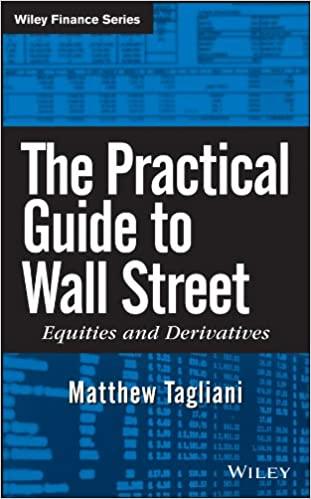Question
Consider a non-dividend-paying stock whose current price S(0) = S is $60. After each period, there is a 50% chance that the stock price goes
Consider a non-dividend-paying stock whose current price S(0) = S is $60. After each period, there is a 50% chance that the stock price goes up by 25%. If the stock price does not go up, then it drops by 20%. A European call option and a European put option on this stock expire on the same day in 3 months at $65 strike. Current risk-free interest rate is 9% per annum, compounded continuously.
(a) Use the Black-Scholes option pricing formula to calculate the call option price after three months. Use = lnu/(sqrt(delta t)) with u=1.25 and t = 1/12. Use a computer algebra device to calculate N(x) for appropriate x, but you have to show manually all the components required for the formula.
(b) (30 pt) Find the Delta, Theta, and Gamma of the option at time 0.
(c) After a week the stock price has gone up to $63. Use the result of part (b) to find the approximate value of the option at the end of week 1. Assume there are 52 weeks in a year.
Step by Step Solution
There are 3 Steps involved in it
Step: 1

Get Instant Access to Expert-Tailored Solutions
See step-by-step solutions with expert insights and AI powered tools for academic success
Step: 2

Step: 3

Ace Your Homework with AI
Get the answers you need in no time with our AI-driven, step-by-step assistance
Get Started


